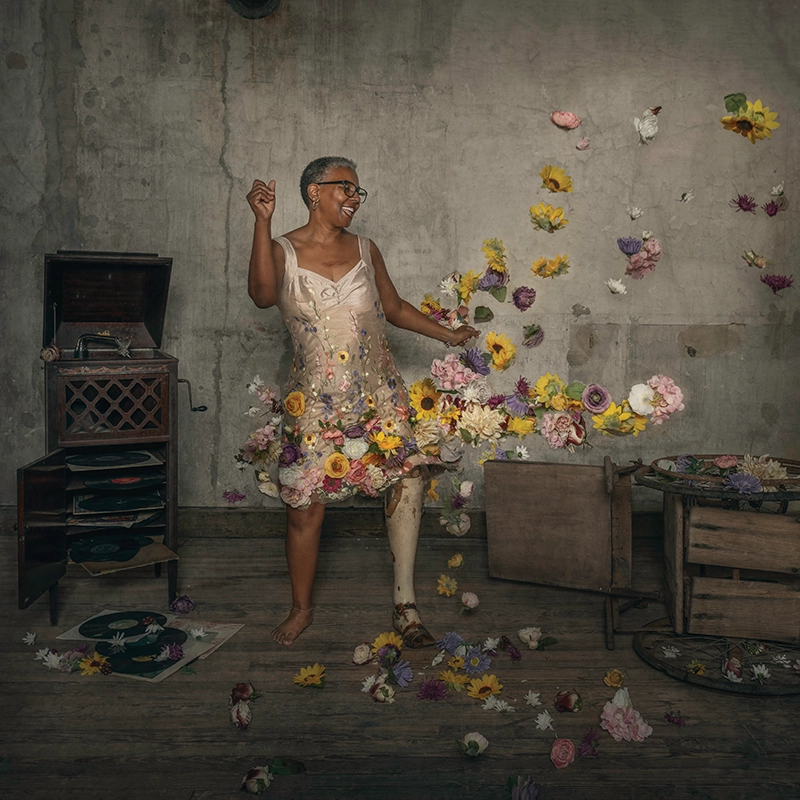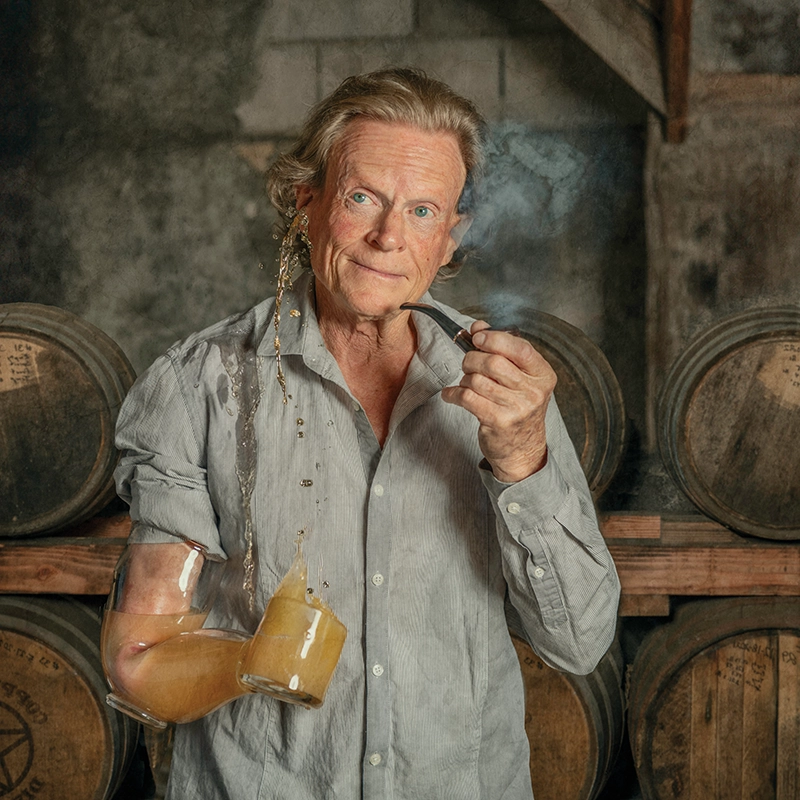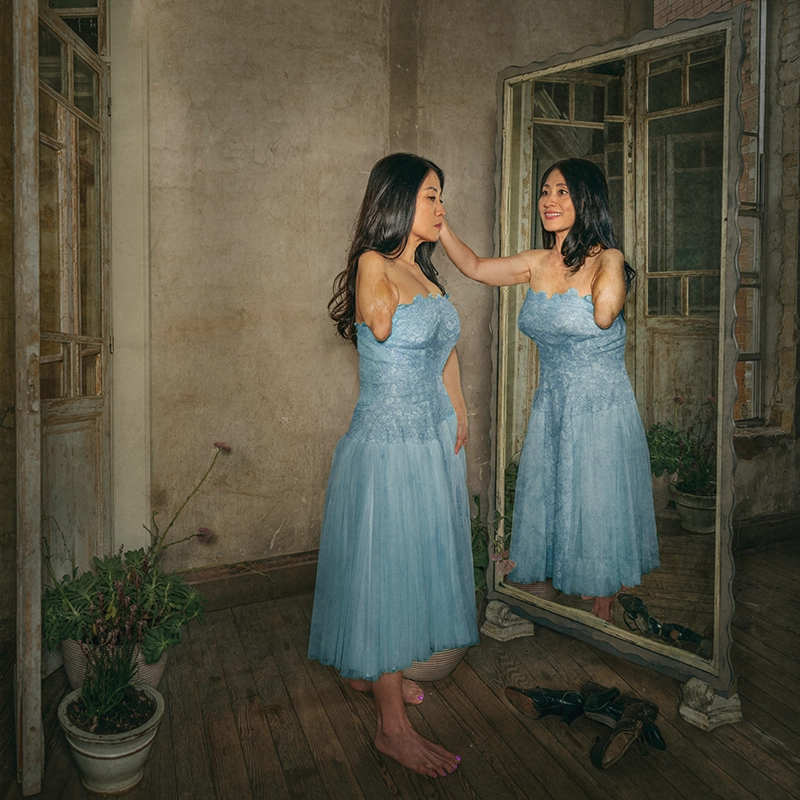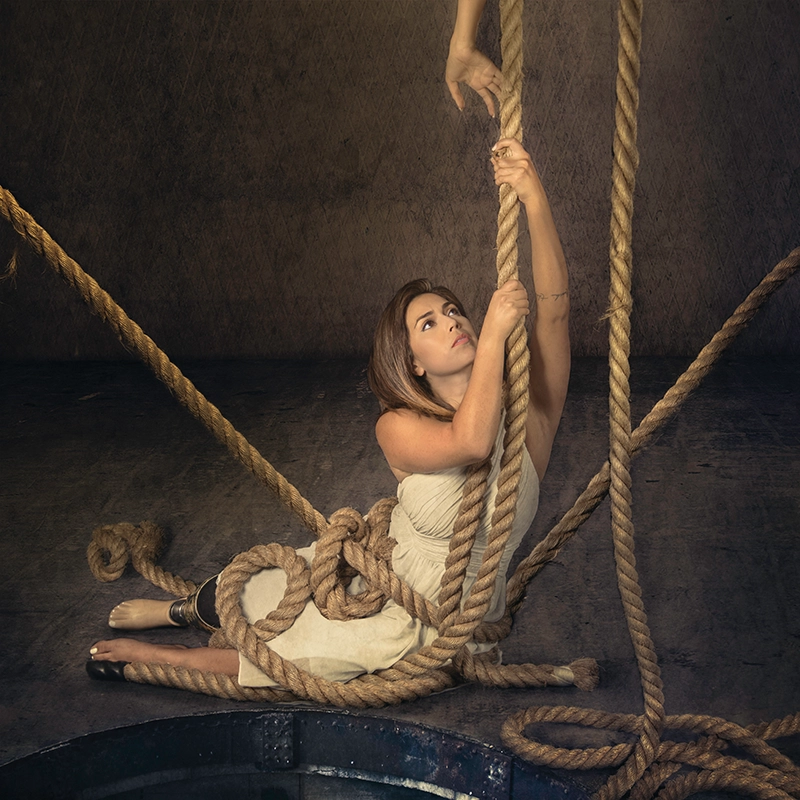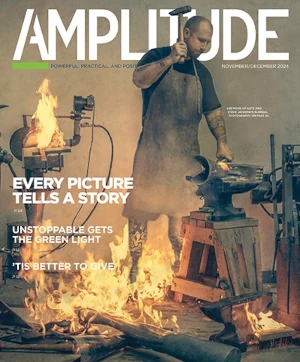Images by Steve and Karen Jackson
Limb loss doesn’t merely transform bodies. It also radically alters life narratives, pushing people into outlandish scenarios they never imagined they would inhabit.
That’s why the subject caught Karen and Steve Jackson’s interest. They’ve spent their careers creating surreal fine-art photographs of people who’ve confronted physical and emotional extremes. Their themes have included organ donation, phobias, skin diseases, and—for about the last decade—limb loss and limb difference.
The Jacksons interview each model extensively about their journey, then develop elaborate fantasy worlds that represent their experience at a gut level. “It can really help the subjects process their own stories,” Karen Jackson told Amplitude. Ideally, the images also provoke a visceral response in viewers, eliciting some sense of how limb loss/limb difference feels—and what it shares with more commonplace human travails.
The images here are among a few dozen the Jacksons hope to publish in a forthcoming book. Visit their website at twokeysphoto.com to learn more about their amputee photography project. Click on any image to enlarge it.
HALLELUJAH, Adrienne Coward
Adrienne:
The decision to have my left knee replaced took me down a road of agonizing pain. I went from using a cane to a walker and finally to a motorized scooter. I was no longer able to enjoy my life fully. After having my leg amputated above the knee, I am back to doing the thing I love most: dancing to gospel music. The rhythm guides me as I give gratitude to God for giving me my life back.
Karen:
Adrienne wanted a photo of her dancing, so we borrowed that old record player from a friend of ours. I picked the dress and hand-sewed flowers onto the bottom of it; she’s on an old prosthetic leg we own. We started some music and got lots of shots of Adrienne dancing all around. Then we had her hold the bottom of the dress and fling the flowers out, and I’d snap a picture. We’d gather them all back up, have her fling the dress again, and get another shot. We layered those shots over each other to create the final effect.
HOOKED, Miles Platt
Miles:
I have a love for the sea and fishing. I once organized a fundraiser for my birthday to raise money for sea turtles. When I’m tired of being asked what happened to my arm, I will just say it was a shark attack. In this photo, I had the idea of putting the fishing line in my mouth, because it shows how sometimes I have to get creative to accomplish a goal. I love the boats in the background. They remind me that there are others out there like me, and I’m never alone.
Karen:
A week before we did this picture, I just happened to be in the Grand Cayman Islands. We shot all the marine wildlife down there with an underwater camera. The cliff in the background and the ocean horizon are from the Grand Caymans, too. When we took Miles’ photo, he was actually in our neighbors’ swimming pool. The basket, boat, and life preserver are just old things we’ve picked up over time. Same with the bamboo fishing pole; it doesn’t even have a reel attached.
REALITIES ILLUSION, Ben Bowden Williams
Ben:
I excelled in most things I tried; it was convincing others that was hard. I started out as a film editor in the late 1970s, cutting 35mm film on a Moviola machine, which is an intricate job even with two hands. The first day on a new crew was always like an audition. People would walk past the cutting room to see how I did it.
Karen:
Ben gave up drinking and smoking, so the photo is a nod to that. We had a glass blower create a prosthesis with a built-in mug, filled it with apple cider, and dropped in big ice cubes to create the splash. Then Steve stood behind Ben and poured cider down the side of his head. He was a big hot mess by the time we got done. The pipe is fake; we just stuck something in the end and lit it to get that smoke.
FLAMES OF FREEDOM, Rebecca West
Rebecca:
I broke my foot at age 10 and was diagnosed with reflux sympathetic dystrophy, a nerve condition causing severe pain. After eight years of failed treatment, I elected to have a below-the-knee amputation. I had a prosthetic leg, but I continued using crutches as a security blanket. During COVID I practiced walking on the leg in challenging situations, like on stairs, curbs, hills, and uneven surfaces. After 11 years of being on crutches, I was finally ready to walk free again.
Karen:
That’s a real fire. We built it in our backyard. The front is all crutches—I went to every Goodwill on the planet looking for wooden crutches—and behind it are some 2x4s to make the fire bigger. We lit it from the back so you could still see the crutches through the flames. Steve built the prosthesis she’s wearing. We wanted it to mirror the wooden crutches.
TOMORROW’S SELF, Suzan Nguyen
Suzan:
At 22, I woke up from a brutal car accident and learned I would spend the rest of my life as an amputee. I experienced the lowest and darkest moments, with thoughts of no longer wanting to be alive and believing my life no longer had any purpose. It was not easy, but I started practicing “radical acceptance” and focusing not on what I’m unable to do, but on the things I’m still alive to do. My younger self would be immensely proud.
Karen:
Suzan stood in front of a real mirror, and we positioned the shoes and plants to capture that there’s a real reflection. Then we popped the mirror out of the frame and had her stand on the other side. The struggle was that we had to flip-flop everything to get her amputation on the proper side. I had to take a bunch of pictures from different angles.
LIFELINE, Lydia Manriquez
Lydia:
My prosthetic leg is a reminder of both loss and triumph. A car accident resulted in the amputation of my right leg below the knee. I still remember the distinct image of a hand reaching through the window to extract me from the mangled vehicle. Through my journey to recovery, I found strength in peer support. I’ve since made it a personal mission to work closely with individuals affected by limb loss.
Karen:
Lydia still gets upset talking about her accident. They literally had to cut her out of the car. So the challenge was how to depict the concept of her trapped inside an auto wreck with that hand reaching in. My daughter manages the gym where Steve and I work out, and one day they had these climbing ropes hanging down from the ceiling. I looked at Steve and said, “That’s it.” This picture was actually taken in the gym.


